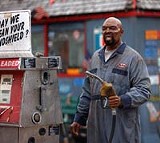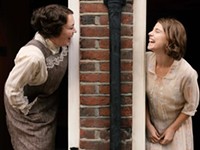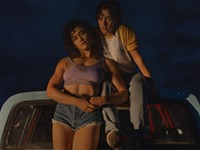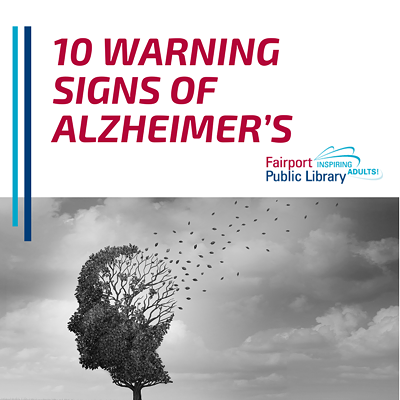[
{
"name": "500x250 Ad",
"insertPoint": "5",
"component": "15667920",
"parentWrapperClass": "",
"requiredCountToDisplay": "1"
}
]
In the original Night of the Living Dead, his first feature film, George Romero explored some previously uncharted territory in the vast wilderness of horror, reinventing the zombie movie and suggesting a new relevance in its central concept of the reanimated dead. His essentially ridiculous notion of a disease that reawakens corpses who then stagger about the countryside in search of live people to eat somehow caught the imagination of filmmakers and filmgoers.
The low-budget picture spawned a number of much more expensive sequels, remakes, and imitations, some of them his own work, inspiring a whole generation of filmmakers to strive for ever new and more gruesome displays of shock and disgust.
Although a rather small and limited subgenre, the zombie flick often displays an inclination toward social and political commentary. Like so many other popular films of the 1930s, a movie like The White Zombie, for example, indirectly addresses a Marxist view of the oppression of the worker, hinting that the frightening zombies actually become the slaves of the ruling classes, a source of cheap labor, brutes who revolt against their masters just as Frankenstein's monster attempts to destroy his creator, or King Kong attacks modern civilization. Romero's original update of the form, however macabre, appears to deal with the volatile issues of its temporal context, the 1960s, especially the Cold War, racial tensions, and Vietnam.
Now, a generation later, after a number of other zombie flicks, including Dawn of the Dead (itself made twice), which satirized consumerism, Romero advances his original concept, uniting the premise of Night of the Living Dead with a vision of the future right out of the Mad Max movies, which allows him to comment once again on contemporary capitalism, social unrest, class tensions, the way we live now. The picture shows some unspecified time some years from the present, in which the dead occupy the countryside while the living hole up in cities, sending heavily armed patrols out to kill the walking corpses by the usual methods of shooting them in the head or burning them up.
The particular city in this film is Pittsburgh, where a multimillionaire named Kaufman (Dennis Hopper) occupies a glittering edifice that overlooks the city he controls, an impoverished community of slums guarded by a private army and constantly threatened by throngs of walking corpses. A group of heavily armed fighters under the command of Riley (Simon Baker) regularly ventures out to the hinterlands, foraging in the deserted towns for food and slaughtering as many of the cadavers as they can. Though they serve Kaufman, the fighting men and women also regard him as an enemy, intent only on enjoying the profits from their patrols.
As in nightmares, the slow, stumbling, apparently mindless creatures, in various horrible stages of decay, seem absolutely inescapable, somehow much more efficient as pursuers and killers than the patrols in their armored vehicles equipped with machine guns and rockets. Whatever their potential for fright, their uncoordinated, clumsy, but unstoppable progress and their occasional invulnerability defy any sense of logic in the film. Their climactic assault on Pittsburgh itself ends ambiguously and inconclusively, apparently allowing for still more sequels as well as indicating the possibility of some weird reconciliation of the living and the dead.
Romero famously introduced cannibalism into the horror flick, and naturally Land of the Dead continues his fascination with the practice. With the assistance of state-of-the-art special effects and makeup, the film simply wallows in blood, flesh, and entrails, with a special taste for dismemberment and some really creative decapitation --- enough heads roll to make Robespierre envious. He also shows that the dead can evolve, in this case acquiring some ability to organize, follow a leader, devise methods of attack, and handle weapons: If this trend continues, the living are finished.
Land of the Dead suggests the continued relevance of its form, showing the future of cities, with wealthy citizens protected from invading mobs by private armies, an oppressive class system maintaining the servitude and poverty of workers, and power concentrated in the hands of a ruling elite.
In a time when some prominent national figures look rather like reanimated corpses themselves --- e.g., the late Dick Cheney or Alan Greenspan or even Strom Thurmond, who eventually did reach his latter end --- and a spectacularly unbalanced economy systematically squeezes the poor to benefit the rich, and the zombies march inexorably toward us, Land of the Dead provides an appropriate image of the state of the nation.
Land of the Dead(R) is playing at Canandaigua Theatres, Cinemark Tinseltown, Culver Ridge Cinemas, Eastview Mall, Greece Ridge 12, Henrietta 18.
Latest in Movie Reviews
More by George Grella
-
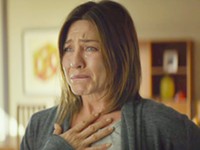
Film Review: "Cake"
Jan 26, 2015 -

Film Review: "American Sniper"
Jan 19, 2015 -

Film Review: "Inherent Vice"
Jan 12, 2015 - More »
